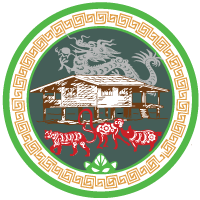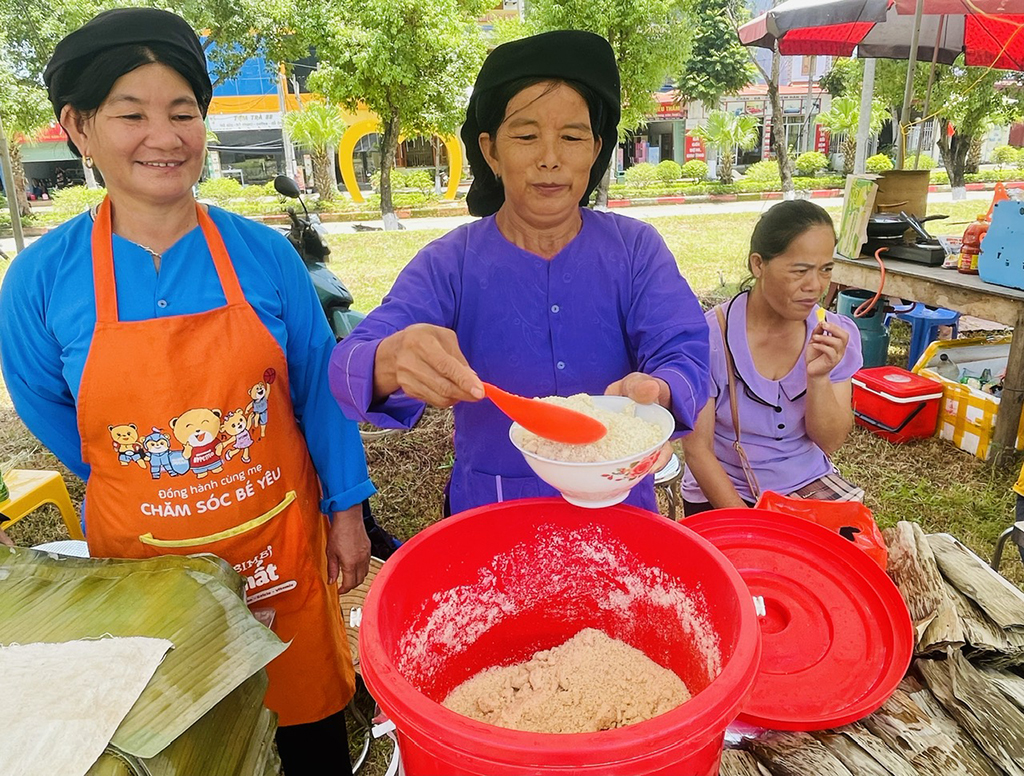In the heart of the rugged mountains of northern Vietnam, where terraced rice fields carve the hillsides and H’Mông villages cling to the mountainsides, lies a culinary treasure: Mèn mén. This simple dish, deeply rooted in H’Mông culture, is much more than just food; it is a symbol of identity, resilience and tradition.
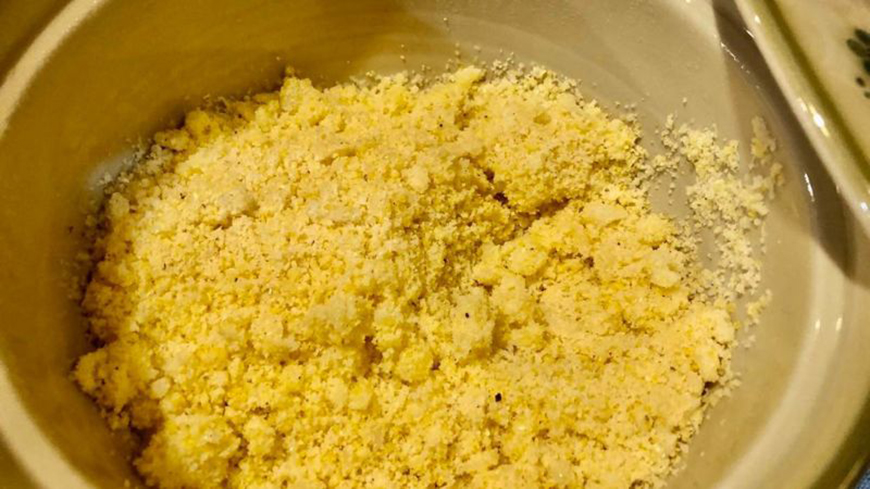
Origins and history
Mèn mén is an ancestral dish, passed down from generation to generation within the H’Mông people. Its origin dates back to the time when corn became a staple crop in the mountainous regions of Vietnam, replacing rice, which was rare or difficult to grow. The H’Mông, with their ingenuity and deep connection to the land, have transformed this humble cereal into a nourishing and tasty dish. Although Mèn mén is a specialty of the H’mông of Hà Giang, it is also possible to taste it locally in Ba Be.
► The H’mong of Ba Be: The People of the Mountains
Preparation: An ancestral art
The corn grown by the H’Mong people on the high hills is fragrant and sticky. This dish seems very simple, but its preparation requires a lot of effort. The corn kernels are separated, ground and sieved to obtain a very fine and homogeneous powder. H’Mong women must calculate the amount of water needed for the powder to be smooth, neither too dry nor too sticky. Then they steam the corn flour twice. The first time, they steam until the corn flour swells, then they take it out to cool. They stir the steamed flour until it becomes frothy, then steam it a second time, over medium heat, until it is fragrant. The men men is cooked, fragrant, sticky and supple.
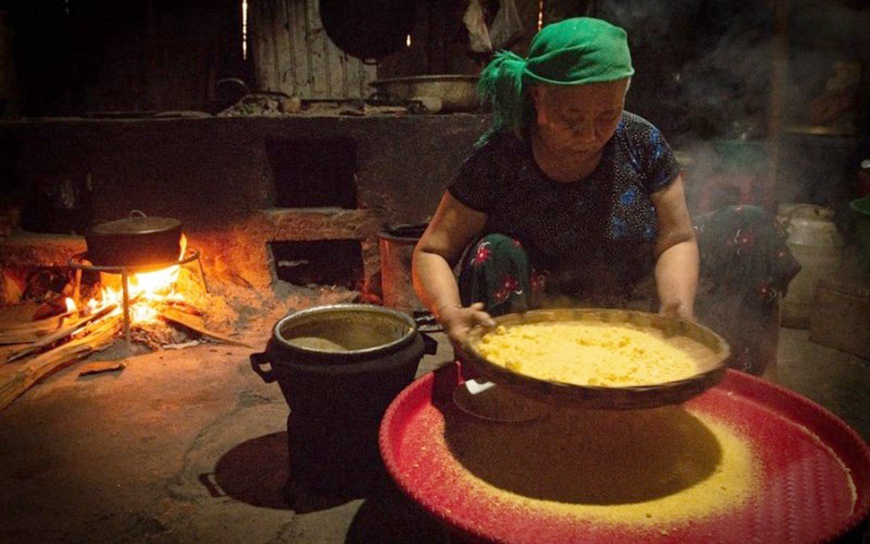
Cultural and folk values
Mèn mén occupies a central place in H’Mông culture. It is present at daily meals, but also at festivals, ceremonies and special occasions. It is a dish of sharing and conviviality, often served at family and community gatherings. It symbolizes the H’Mông people’s connection to the land and their respect for natural resources. Its preparation is a moment of transmission of know-how and traditions between generations. This dish is present at large festivals and birthdays such as engagements, weddings and the Tết festival. It is never missing on the altars of the ancestors.
Tasting and accompaniments
Mèn mén is eaten hot, with a grainy texture and a sweet corn taste. Mèn mén can be eaten accompanied by turnip soup, pumpkin or squash buds, but the Mông’s favorite soup is cháo lảo or canh chua. This is a soup made from ground soybeans, fermented until it becomes acidic and cooked with turnip. Variations include fresh vegetables (cabbage, spinach, etc.), meat (pork, chicken, etc.), but also soups and broths or even grilled chili, which adds a strong and spicy flavor.
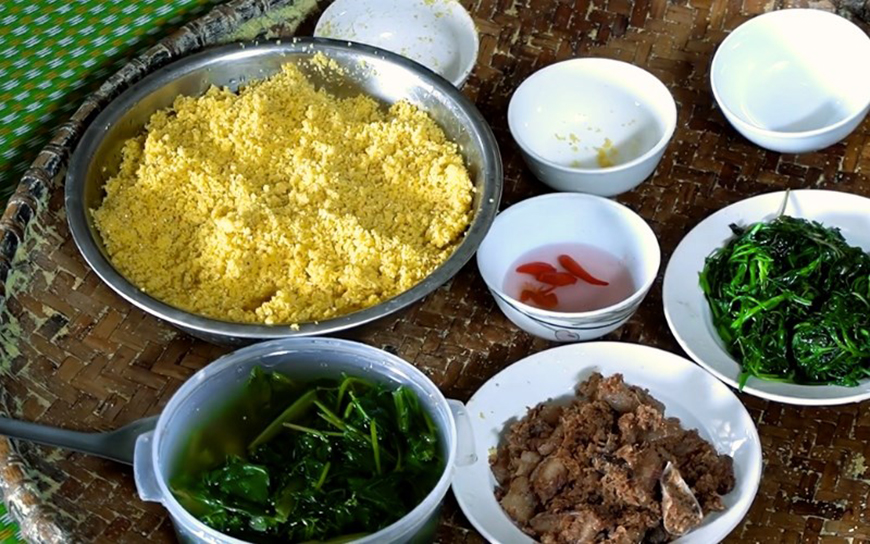
Mèn mén to prepare at home
Ingredients:
- 250 g fine cornmeal (polenta)
- 500 ml of water
- 1 pinch of salt
Instructions:
Preparation of the semolina:
- In a large bowl, mix the cornmeal and salt.
- Gradually add the water, stirring constantly to avoid lumps. The consistency should be grainy and slightly moist.
Steaming (simplified method):
- If you have a steamer, use it. Otherwise, you can use a metal colander placed over a saucepan of boiling water.
- Line the colander or steamer basket with parchment paper.
- Pour the moistened cornmeal into the colander, spreading it evenly.
- Cover and steam for about 20 minutes, or until the semolina is cooked and tender.
- Remove the colander from the heat and let cool slightly.
Crumbling:
- Using a fork, crumble the cooked cornmeal to separate the grains and obtain a fine and airy texture.
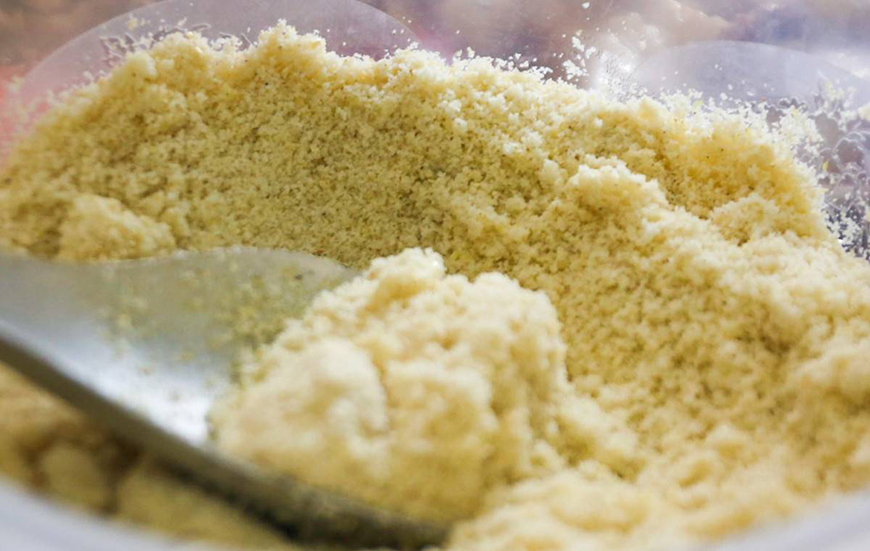
Tips and variations
- For a richer flavor, you can replace some of the water with vegetable or chicken broth.
- You can add steamed vegetables (carrots, peas, spinach) to the cornmeal before crumbling.
- You can accompany the Mèn mén with grilled meat, sautéed vegetables or a spicy sauce.
- Instant polenta can be used, but the result will have a different texture.
Important notes
- The texture of Mèn mén is grainy, which is normal.
- Cooking time may vary depending on the cornmeal used.
